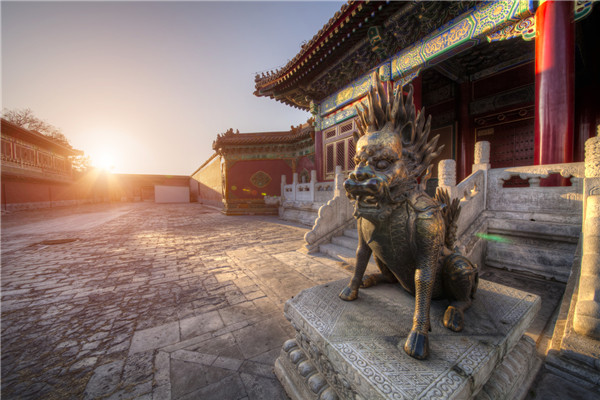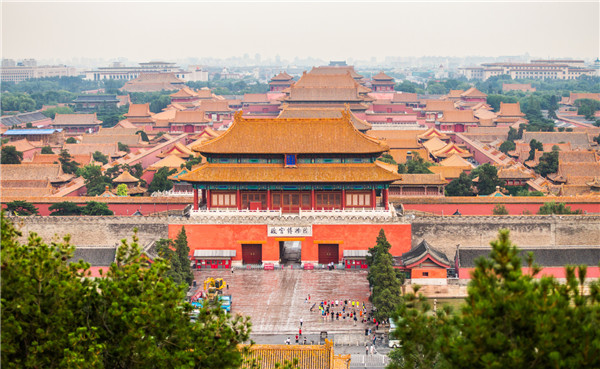
来源@视觉中国
The Palace Museum was commissioned to build by the third emperor Zhu Di of the Ming Dynasty. The palace was built between 1406 and 1420, but was burnt down, rebuilt, sacked and renovated countless times, so most of the architecture you can see today dates from the 1700’s and onward.

来源@视觉中国
The Forbidden City was the seat of Imperial power for 500 years, and is now a major tourist attraction in China.

来源@视觉中国
The Imperial Palace has 4 gates. The Gate of Divine Prowess (Shenwumen) in the north, Merdian Gate (Wumen) in the south, the Eastern Floral Gate (Donghuamen) in the east, and the Western Floral Gate (Xinhuamen) in the south, the Eestem Folwery Gate (Donghuamen) in the east, and the Western Flowery Gate (xinhuamen) in the west.

来源@视觉中国
If you not part of a tour group, we suggest you rent a multi lingual guide record at Meridian Gate (Wumen) and return it when you arrive at the Gate of Divine Prowess (Shenwumen).

来源@视觉中国
Featured Attractions: Imperial roof decoration of highest status on the roof ridge of the Hall of Supreme Harmony. The design of the Forbidden City, from its overall layout to the smallest detail, was meticulously planned to reflect philosophical and religious principles, and above all to symbolize the majesty of Imperial power. Some noted examples of symbolic designs include: Yellow is the color of the Emperor.



